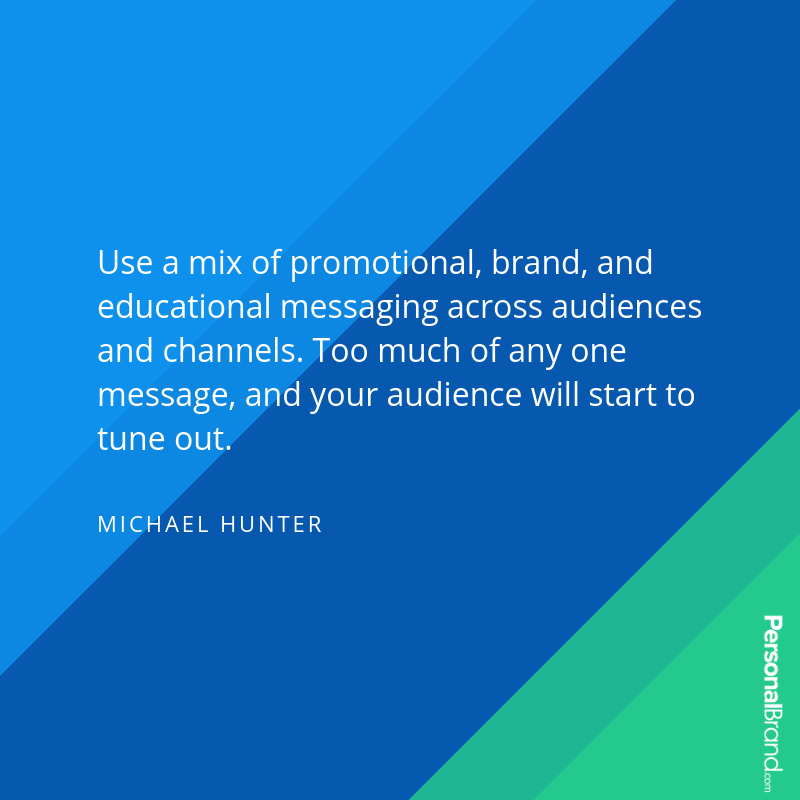Five Easy Steps to Build Your Personal Brand Content Calendar
You’ve built a personal brand because you’re a subject matter expert. Your content calendar should reflect your breadth of knowledge!
If you’re like many who are passionate and knowledgeable about a topic, you have so many ideas for educational content, blogs, vlogs, podcasts, webinars, and social media posts. All these content ideas keep you up at night!
So, how can you organize your thoughts? How frequently should you share your great ideas, and in what cadence? Well, you need a content calendar.
If you have the opposite struggle—and you’re unsure what content to produce that would be of value to your audience or prospective customers, that’s okay.
It can be challenging to decipher what pieces of content will resonate with an audience and encourage them to engage. You may also be wondering how frequently you should be tweeting, posting, blogging, and emailing.
A content calendar will streamline this whole process.
Whether you suffer from content concept overload or you have writer’s block, the process of creating a content calendar can help you to:
- Strategize content channels and topics to test in order to meet your customer and prospect engagement goals.
- Organize an optimal schedule for releasing news and information to your various engagement channels.
- Create a roadmap for content creation and distribution deadlines that you can commit to. With that in place, you’ll never have to worry about your raving fans going too long without hearing from their favorite expert.
The Five Steps to Building a Content Calendar:
- Understand Your Target Audience
- Identify Key Messages for Each Audience
- Identify Your Relevant Communication Channels
- Put it All Together into a Visual Calendar
- Analyze and Optimize
What is a Content Calendar?
A content calendar is a tool used by bloggers, influencers, brands, and publications to organize and control the creation and distribution of educational and promotional content to all target audiences across all relevant channels.
You’ll notice the definition above includes the phrases, “all target audiences,” and “all relevant channels.”
Before we discuss how to build your content calendar, we need to first talk about target audiences, communication channels, and messaging as the foundational elements of your communication strategy.
Step One: Understand Your Target Audience
To successfully build your personal brand from six to seven figures, you likely have multiple audiences to which you regularly provide educational and promotional messaging. It’s also very likely that those messages are different.
If you’re a life coach, for example, your audience may be segmented into prospects and customers.
From a promotional perspective, you could be sending cross-sell offers to your customers and introductory offers to your prospects.
From an educational perspective, a blog about goal setting could be relevant to both audiences, but a webinar about why everyone can benefit from a life coach is only going to be relevant for prospects who have not yet taken advantage of your services.
The point is that you can’t decide what content to build until you decide for whom you are building it, and what messages are relevant to them.
Before you build your content calendar, decide who your target audiences are and to whom you want to speak. Your multi-pronged audience strategy could be as simple as prospects versus customers, or it could be more complex. Perhaps there is value in breaking down your audience into:
Prospective revenue banding. Would you speak differently to a prospect with the potential to spend a greater amount of money on your services?
Geography. Do your services vary by region? Or would your offer be different to prospects located in your city or region versus those across the country or to international prospects?
Prospects, current clients, and former clients. A valuable marketing strategy for your personal brand may involve re-engaging former clients who have not purchased from you in the past six months or a year.
Demographics. Do you have specific wisdom to share that you would customize for men versus women? People established in their careers versus those just starting? Young individuals versus mature individuals?
Understanding your target audience is a critical step in the marketing strategy creation process.
Don’t rush or overlook this part before building your content calendar. Take the time to do it right; it will inform your messaging strategy. Which leads us to…
Step Two: Identify Key Messages for Each Audience
Whether you have a new or established personal brand, you should know your personal brand value proposition—the unique differentiators that make your services valuable to your target audience.
Think of your value proposition as the foundation of your brand identity and messaging strategy. Now, let’s break it down further.
Why You Need a Messaging Mix
Thanks to the proliferation of digital everything, we are all overwhelmed by news, information, and advertising.
The best way to engage your audiences, build trust, stay relevant, and make your prospects come to you when they are ready to make a purchase, is to engage them with just the right mix of educational content and promotional content.
Here’s why:
We have all learned to tune out advertising. What was the last commercial you saw on television? Exactly.
No matter the brand or the industry, if people only see promotional offers from you, your brand will eventually become one more piece of marketing white noise in an already cluttered world. Add value to your audience by leveraging a diverse content calendar.
What your prospects want is information—especially from subject matter experts like you.
Sixty percent of consumers enjoy reading relevant content from brands, and 82 percent feel more positive about a company after reading custom content.
You launched a personal brand because you are extremely knowledgeable about a topic.
Your wisdom can help people in a specific and impactful way. Even the smallest fragments of tips and tricks from you are extremely valuable to your prospects.
Guaranteed: a 400-word blog with insights and expert advice is more valuable for your prospects than an ad with your name, tagline, and a link to your website.
Offering educational content positions you as the thought leader in your industry space you’re working within.
It establishes your personal brand in your prospects’ minds so that when they are ready to make a purchase, they will remember you and seek you out. That, or when they see an ad or offer for your services, they will already understand the value of your services. Your well-timed ad will be the impetus to make them act.
Building Your Messaging Mix
The bottom line is that for every audience segment you identified in step one, you need to identify the educational and promotional messages that will be relevant to their needs. Such messages should include:
Personal brand information: Who are you? What is your background? What insights do you offer?
Promotional offers: The products and services you offer, sales, special offers, cross-sells, up-sells, introductory rates, subscription options, and other information that will motivate a purchase.
Educational content: Without giving away your most valuable insights (your customers should pay you for that knowledge), what tips, advice, and best practices can you share with prospects and customers? This helps reinforce your position as a thought leader and makes them want to retain your services.
Bonus Content: Learn how to create copy that converts. Get more mileage out of your content calendar by being strategic with your copy.
Understand that it’s okay if you don’t know exactly what offers or educational content will be most valuable yet. Your content calendar strategy will allow you to test both educational and promotional messages. From there, you can refine and optimize your go-to-market approach.
Now that you know who you are going to speak to, and what you’re going to tell them, how are you going to reach them?
Step Three: Identify Your Relevant Communication Channels
Taking into consideration your target audiences and the messages that would resonate with each audience, you need to understand how to reach them and what communication vehicle is most conducive to the message.
First, what communication channels do your audiences use most frequently?
If your target customers are senior adults, they are probably not on Snapchat.
Similarly, if you are targeting CEOs of Fortune 500 companies, they may not be likely to open and read a lengthy email from an unfamiliar sender.
To make your content strategy as effective as possible, you must spend time researching the best way to engage your target audiences.
There are two easy ways to do this:
Traditional research. Educational entities such as the Pew Research Center are valuable sources of insight for such topics as marketing, communications, and social media trends from vetted researchers.
Primary research. The next time you are meeting with a customer or prospect, ask them how they prefer to receive information from trusted partners. Ask if they read or delete unsolicited emails, what social media platforms they turn to for news and insights, and if they’d be likely to spend an hour watching a webinar or listening to a podcast.
Such insights, straight from your prospects’ lips will be some of your most valuable marketing intel.
We mentioned the importance of understanding the best channel for each message. To be successful, use your best judgment.
Let’s say you want to tease a recent customer success story in 100 words. That message may resonate with someone who reads it in an email, but may not be noticed by someone scrolling through their social media feed.
If you have a dynamic and engaging presentation style, a three-minute video offering tips and advice may be really impactful. Do that, rather than puting your tips in written blog format.
Again, experiment with and test your communication channels. See what is most effective for engaging your target audiences and encouraging them to take action (read: make a purchase). The results may surprise you.
Step Four: Put it All Together in a Visual Calendar
Now you know who you are speaking to, what you are telling them, and where you can reach them.
It’s time to put all that information together in an organized, visual calendar.
As we mentioned previously, a content calendar will help you organize your thoughts and establish content creation and publishing deadlines for yourself. There’s no need to feel overwhelmed or have things sneak up on you at the last minute.
Here are some foundational tips and best practices:
Don’t Try to Plan the Whole Year. If this is your first content calendar, we recommend building it out for just one quarter at a time.
This timing will allow you to remain nimble, analyze the results, and adjust your tactics moving forward.
Build an Actual Calendar. Not surprisingly, you’ll want to build a calendar that looks like a calendar.
Depending on your software comfort-zone, Microsoft Excel can be a helpful tool to create a schedule that breaks down your content by audience, message, and channel.
Ultimately you will want to use whatever tool works for you and that you will use consistently. Some other platforms to check out for content calendars include Asana and CoSchedule.
Follow Channel Cadence Best Practices. When flighting content, you don’t want to overwhelm your target audience (or yourself).
Consider these marketing channel frequency best practices when building your schedule:
- Blog: Two times per month to once per week.
- Social media: Three to seven times per week across all relevant channels (Facebook, Instagram, Twitter, LinkedIn, Snapchat, etc.).
- Email: Twice per month to weekly, depending on the audience and offer. It may make sense to email your prospects more frequently if you are reminding them about an upcoming event. Similarly, you may want to email your prospects more frequently than current or former customers.
- Podcast/video blog: Daily to monthly, depending on the length of the content. Keep daily podcasts and videos short. If you are producing longer-form content that will take you time to prep, shoot, and edit, consider a monthly schedule.
- Bonus content: Learn how to reach 10x more people with high-performing video memes.
- Press releases: Only when relevant to promote upcoming events or offerings.
- Webinars or live events: Monthly to quarterly, depending on the scale and scope.
Again, when it comes to building your content calendar, don’t overwhelm yourself. If you are a marketing team of one who is also trying to service clients, while refine your product and service offerings, keep your content calendar manageable.
If you have the help of a marketing team at your disposal, you can plan for a more robust content schedule.
Plan for a marketing messaging mix.
As discussed in step two, make sure you are leveraging a mix of promotional, brand, and educational messaging across audiences and channels. Too much of any one message, and your audience will start to tune out.
Cross-promote.
Think of your content calendar as a finely tuned orchestra.Every component should work in harmony with one another.
Promote your blog on Facebook and email your prospects a link to your latest podcast. The more exposure you can get on every piece of content you produce, the higher your ROI.
Spread the love.
A benefit of creating a visual content calendar is that it will help you to spread your points of engagement across channels throughout the month. This will help ensure you’re not tweeting, posting, blogging, and hosting a webinar all on the same day.
By spreading out your messages, your personal brand will remain top-of-mind for your prospects and customers.
A well-thought-out schedule will also help you test engagement timing.
For example, do your tweets perform better early in the morning? Do your email open rates peek on a Monday or a Thursday? Do you receive more webinar signups when your event takes place before or after lunch? Analyzing these insights will help you optimize future content.
It’s okay to rinse and repeat. Don’t feel the pressure for every tweet to be unique. You may find yourself busy working with a new client, without time to write your monthly blog.
If you need something to share on social media for the week in cases like that, re-share a link to an older, popular blog.
Just because something isn’t your newest piece of content doesn’t mean it’s not worth sharing.
Step Five: Analyze and Optimize.
This step is critical.
Your content calendar will only be worth your time and effort if you fine-tune it to work for you.
You may find that your audience isn’t engaging with your tweets, but your email open rate is high. Take Twitter off your plate and put more time and effort into creating engaging emails.
If your educational webinars perform better than your product promotional webinars, create more informational content. Follow up with a special promotional email to attendees to encourage them to make a purchase.
Final Words of Advice
Here’s a recap of our five steps to building a successful content calendar:
- Understand Your Target Audience
- Identify Key Messages for Each Audience
- Identify Your Relevant Communication Channels
- Put it All Together into a Visual Calendar
- Analyze and Optimize
Keeping your personal brand top-of-mind with your target audience means reaching them multiple times per month via multiple channels.
Finding the right mix of audience, messaging, channel, and timing is an art and a science.
If this is your first attempt at building a content calendar, don’t give up if you don’t initially receive the results you want.
Test, analyze, and test again. All the best marketers refine their strategies.
By taking an analytical approach to your content calendar, you will put yourself on pace to take your personal brand from six to seven figures in no time.
![]()
We hope you enjoyed this article, thanks for reading! Also, follow us on Facebook, and Twitter for updates every time we publish!






